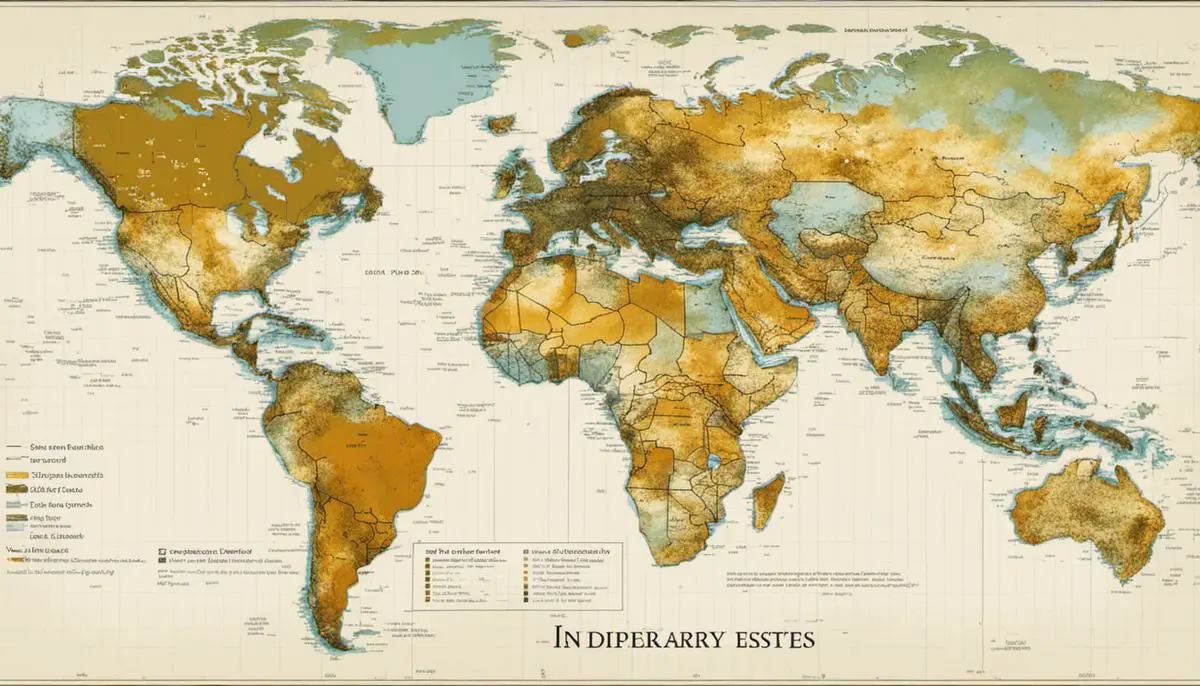In the intricate realm of legal taxation and inheritance law, the concept of a residuary estate serves a significant role. Often, understanding this relevant term seems daunting for many individuals. However, its principles and implications are of paramount importance in the process of inheritance division and estate planning. Simply put, a residuary estate can be termed as the portion of a person’s estate that remains after all debts, costs, and specific gifts have been satisfied. This essay will delve into the essential aspects surrounding this term, including defining its very concept, outlining the distribution process and principles, and exploring the legal rights, responsibilities, and potential disputes that can emerge within this context.
Concept of Residuary Estate
In the realm of estate planning, the concept of a “Residuary Estate” is of paramount importance. While complex at its core, it holds the key to smart, sensitive, and directed asset allocation that honors the wishes of the deceased.
The term “Residuary Estate” refers to the portion of a decedent’s estate that remains after the fulfillment of all debts, administration expenses, taxes, and specific testamentary gifts. In essence, it encompasses whatever is “leftover” following the settlement of the aforementioned obligations and bequests.
From a legal perspective, the Residuary Estate is distinctly impactful. It has the power to transform the financial situation of an individual or entity who would not have otherwise inherited, or to enrich existing inheritances. In stark terms, it is the promoter of fairness and balance in the distribution of an estate’s assets.
The fascinating aura surrounding a Residuary Estate lies within its unpredictability. The residue of an estate isn’t quantifiable until all other obligations and legacies are satisfied. This causes it to be a figure characterized by a high degree of variance, and hence, provides an intriguing layer of complexity in estate planning.
A will typically avails provisions for the residuary estate. The individual who is entitled to receive the residuary estate is known as the “residuary legatee” or “residuary beneficiary”. If no such beneficiary is named in the will, or if the named beneficiary is not alive, then the intestacy laws of the jurisdiction where the deceased resided at death will typically predetermine the recipient of the residue.
One final key point to emphasize is the degree of control a testamentary individual has over the distribution of their Residuary Estate. It is entirely their prerogative whom they wish to name as the beneficiary. This freedom to steer the fate of their residual estate is a poignant testament to their power and autonomy, even posthumously.
Therefore, the Residuary Estate, although complex and often misunderstood, stands firmly in the terrain of estate planning as an essential tool. It balances inheritances, promotes fairness, introduces a layer of uncertainty and, above all, honors the final wishes of the individual. This makes it not only intriguing from an academic viewpoint but also consequential in real-life applications.

Distribution Process & Principles of Residuary Estate
As we delve further into the discourse on residuary estates, it is fitting to examine how these estates are distributed, and the guiding principles underpinning this process. Making sense of the distribution mechanism is vital; it elucidates an essential part of estate planning that, despite its unpredictability and complexity, upholds the central tenet of testamentary freedom – the prerogative of the individual to control the dispersion of their assets posthumously.
The distribution process for a residuary estate commences once all the explicit bequests in a will have been satisfied, and all the deceased’s debts, taxes, and funeral costs have been settled. What remains is the residuary estate: that portion of the deceased’s assets not explicitly designated to specific beneficiaries. This is then distributed in accordance with the conditions the testator laid out in their will.
The testator, exercising considerable autonomy in this process, typically bequeaths the residuary estate to a residuary legatee or multiple legatees. However, should a will not specify a residuary legatee, or should the legatee predecease the testator, then the residual assets pass through intestacy laws. These laws, governing the distribution of property for those who die without a will, operate on a hierarchy based on kinship, ensuring the deceased’s assets stay within the family lineage.
The principle of cy-près, French for “as near as possible,” also governs the distribution of residuary estates. This principle comes into play when executing the provisions in a will is either impossible or impractical. It permits the courts to adapt the will’s terms to effectuate the testator’s intentions as closely as possible.
A notable aspect of the distribution mechanism is the principle of ademption by extinction. This implies that if a particular asset listed in the will no longer exists at the time of the testator’s death, the intended beneficiary receives nothing in lieu. This underlines the fluid nature of the value of the residuary estate, which is subject to changes in the testator’s estate during their lifetime.
Moreover, the distribution of residuary estates must comply with the rule against perpetuities, an often misunderstood doctrinal area of trust law. Essentially, this rule dictates that a bequest must vest within a specified time, commonly interpreted as within 21 years of the death of a life in being.
Additionally, it is crucial to understand that the adjudication of Residuary Estates is particularly sensitive to the jurisdiction-specific regulations where the deceased resided or where the property is located. Therefore, the international dispersion of assets these days further enhances the complexity tied to the distribution process.
In conclusion, while the distribution mechanism and underlying principles of residuary estates elucidate the complex machinery of estate planning, they pulse with a central core of fairness and respect for testamentary autonomy. These guiding principles not only ensure that the deceased’s last wishes are honored but also weave a safety net for unexpected or unaccounted-for turn of events, securing the interests of both the legatee and the society.

Legal Rights, Responsibilities, and Disputes Regarding Residuary Estate
Delving into the legal aspects of a residuary estate invariably involves the exploration of potential disputes that may indeed arise, and the methods employed to resolve these often complex issues. These disputes are typically a product of ambiguities in a will, issues related to the distribution of assets, or the lack of comprehensive estate planning by the testator.
One such issue is the correct classification of the residual assets. It is incumbent upon the estate’s administrator to correctly distinguish between specific, demonstrative, general, and residual bequests. Misclassification can lead to misguided distribution of the residuary estate, instigating disputes among beneficiaries.
Furthermore, the residuary estate is subject to disputes especially in instances of partial intestacy. This is where the will does not exhaustively distribute all of the deceased’s property. In these situations, the laws of intestacy will dictate who should inherit the portion of the residuary estate that remains undistributed.
Moreover, it’s worth mentioning the Doctrine of Lapse, which comes into play when a residuary legatee predeceases the testator without replacements. The absent legatee could create a void in the will – one that could become a dispute – which relative gets what portion of the estate. The Doctrine of Lapse, depending on jurisdictional law, may offer solutions for such scenarios.
In addition, the influence of external factors such as the bankruptcy of the residuary legatee or the occurrence of debts and liabilities on the testator’s estate cannot be understated. Such situations could give rise to legal disputes over priority between the legatee and the creditors.
Approaches to resolve disputes are typically grounded in testamentary law, principles of fairness, and the preservation of testator’s intentions. Mediation and arbitration are often used to resolve disputes without resorting to litigation. Parties can agree to a neutral third party who decides on the matter, or alternatively, assist the parties to reach a mutual resolution.
Finally, while the court remains the ultimate authority to interpret the testator’s will if disputes remain unresolved, invoking the courts represents a final measure where potential resolutions have been exhausted. The courts exercise a key role in maintaining adherence to the rule of law and preserving the integrity of the intention behind the deceased’s estate.
In conclusion, the field of residuary estate encapsulates a fascinating intersection between law, societal norms, and interpersonal relations. The legal rights and responsibilities involved are diverse and multidimensional, requiring a deep understanding of their intricacies. Disputes, naturally arising from the unpredictability and high stakes involved in inheritance matters, offer a window into the many complexities of human societal structures and the role law plays in moderating and mediating these influences.

Undeniably, a thorough comprehension of the concept of residuary estate, its distribution processes, and the related legal rights and responsibilities is crucial to effectively engage in estate planning and management. While the process can seem complex, with an array of legal stipulations to adhere to, knowledge is empowering, enabling individuals to protect their interests and uphold their rights. Whether you are an executor, potential beneficiary, or just an interested individual, understanding the mechanics of residuary estate will most likely prove to be beneficial in your legal and financial journey.

